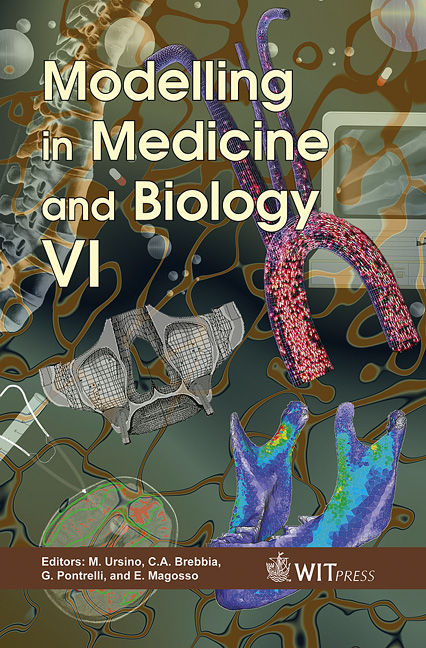Estimation Of Knee Ligaments Loads Using The Modelling Approach Applied On In-vivo Accurate Kinematics And Morphology Of A Young Subject
Price
Free (open access)
Transaction
Volume
8
Pages
9
Published
2005
Size
1,051 kb
Paper DOI
10.2495/BIO050381
Copyright
WIT Press
Author(s)
R. Stagni, S. Fantozzi, M. Lannocca, L. Bertozzi & A. Cappello
Abstract
The knee joint is a key structure of the human locomotor system. Any lesion or pathology compromising its mobility and stability alters its function. As direct measurements of the contribution of each anatomical structure to the joint function are not viable, modelling techniques must be applied. The present study is aimed at evaluating the importance of anatomical twist in the determination of mechanical stabilising action of the cruciate ligaments during the execution of a daily living activity. For this purpose accurate parameters from nuclear magnetic resonance and 3D-fluoroscopy of a single selected subject during chair risingsitting motor task were used. The modelling of the twist of fibres was fundamental in the determination of the specific behaviour of the posterior cruciate ligament in particular. Keywords: knee model, ligaments, mechanical simulation, 3D fluoroscopy, magnetic resonance. 1 Introduction The knee plays a fundamental role in determining the human locomotor ability. Any alteration of its anatomical structures can compromise its function. The development of effective methods for surgical reconstruction and rehabilitation is of great clinical interest, regarding both joint replacement and surgical reconstruction of the main anatomical structures. This interest is demonstrated by the 259000 total knee replacements, 25000 ligaments reconstructions and 15000 other repairs of the knee performed in the USA in 1997 as reported by the American Association of Orthopaedic Surgeons (AAOS). For the development of these procedures, an accurate knowledge of the mobility and stability of the
Keywords
knee model, ligaments, mechanical simulation, 3D fluoroscopy, magnetic resonance.





